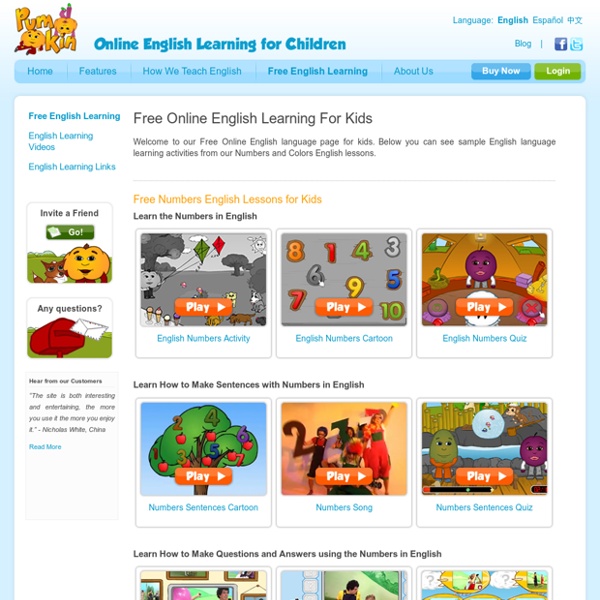



Game Design With Bloxels Bloxels is an innovative way for students to create video games. The games can be turned into an educational game simply be adding white story blocks to the game. How many times do we ask our students to showcase what they learned? A book report, a science topic, a moment in history, a math lesson. So you are probably wondering, how does Bloxels work? Green = Terrain Blue = Water Purple = Enemies Orange = Exploding Red = Danger Yellow = Coins Pink = Powerups White = Story blocks Once your students have finished building their game boards, they are able to take a picture of the board using the Bloxels App. Once students have configured their game, they can choose to begin playing their game, or create their own game character. Bloxels has included a teachers manual with directions for playing, as well as lesson plans. Recorded Version of Bloxels Presentation
Fold N Fly ✈ If It Were My Home FREE Virtual Math Manipulatives for Chromebook and Computer Users FREE Virtual Math Manipulatives for Chromebook and Computer Users Base ten blocks, spinners, geoboards, fraction circles...These are all types of math manipulatives that teachers have readily available to help teach mathematical problem solving and reasoning. These physical objects help engage our learners through a hands-on approach. However, these physical objects come with a price tag. Once again, I love any and all hand-on activities. Dreambox published THIS article that discusses how virtual manipulatives have "unique characteristics that go beyond the capabilities of physical manipulatives." There are lots of iPad apps for math manipulatives (ex. Glencoe Math One of my FAVORITE virtual manipulatives websites is Glencoe Math by McGraw Hill. There are TONS of different manipulatives and story boards for PreK-8th grade. Toy Theater Toy Theater has a wonderful bank of virtual manipulatives with lots of options. McGraw Hill McGraw Hill has another small selection of virtual manipulatives.
Typing Tutor, Typing Test and Typing games at rapidtyping.com Order in the Library | University of Texas at Austin School of Information Order in the Library was developed by four teams of software engineering students in 2002-2004. The product was based on specifications the teams received from Ms. Susan Sanders, an elementary school librarian at Zavala Elementary in Austin, TX. The project was developed in Flash and has enjoyed great popularity thanks to the simplicity of its design and its utility in helping pre-college students learn how to correctly shelve books using the Dewey Decimal system. S2S Utopia is the umbrella name for a project that grew out of a Software Engineering class taught at The University of Texas at Austin from Fall 1997 through Fall 2006. Over the years, earlier projects continued to be available for continued use under a copyleft agreement (which allows projects to be used and enhanced over time in an approach similar to the GNU project). S2S Utopia was hosted by the Department of Computer Sciences at the University of Texas at Austin from 1997 through 2007.
Home Super3 Research by Emilie Buske-Ferman on Prezi Lesson Plans – Search Education – Google Picking the right search terms Beginner Pick the best words to use in academic searching, whether students are beginning with a full question or a topic of just a few words. View lesson Advanced Explore "firm" and "soft" search terms, and practice using context terms to locate subject-specific collections of information on the web. Understanding search results Learn about the different parts of the results page, and about how to evaluate individual results based on cues like web addresses and snippets. Engage additional search strategies, such as generalization and specialization. Narrowing a search to get the best results Apply filtering tools and basic "operators" to narrow search results. Compare results for basic searches with ones that use operators to discover the impact the right operator has at the right time. Searching for evidence for research tasks Evaluating credibility of sources Consider, tone, style, audience, and purpose to determine the credibility of a source. Culture Culture
Create Digital Jigsaw Puzzles with Jigsaw Planet - The Techie Teacher® Create Digital Jigsaw Puzzles with Jigsaw Planet Jigsaw Planet is a website that has been around for years which contains digital jigsaw puzzles that can be assembled using any device with a web browser. It also has the capability to upload any image and create a digital puzzle for someone else to solve. I wrote about this tool back in 2013 but wanted to revisit it after receiving a question on my Facebook page the other day asking if there was a way to create a digital puzzle from a photo. Below is an example of a Jigsaw Planet puzzle (I made an easy one just for you😉). IMPORTANT: The Terms of Service states that users must be 13 years or older to use Jigsaw Planet. How to Create Your Own Digital Jigsaw Head to Jigsaw Planet and upload a photo or image you want to turn into a digital puzzle. My favorite feature about this tool is the ability to make your jigsaws various levels of difficulty. Classroom Connection 😊Digital Breakout Clues 😊Reveal a top secret mission for students Welcome!